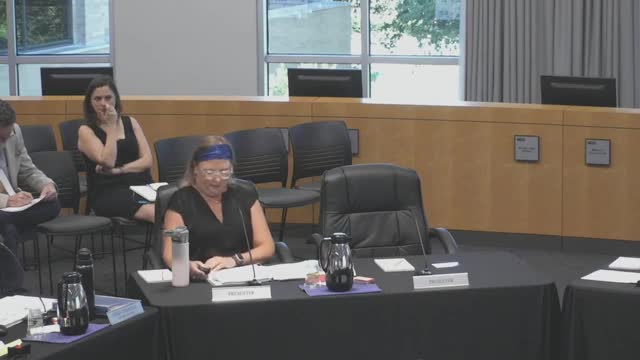Texas launches innovative tool to track reservoir evaporation
August 23, 2024 | Lower Colorado River Authority (LCRA), Departments and Agencies, Executive, Texas
This article was created by AI summarizing key points discussed. AI makes mistakes, so for full details and context, please refer to the video of the full meeting. Please report any errors so we can fix them. Report an error »

In a recent government meeting, officials highlighted the successful development of a new hydrometeorological modeling project aimed at improving water management in Texas. The project has produced a comprehensive daily reservoir evaporation database, known as the Daily Lake Evaporation Model (D Lim), which provides accessible data for stakeholders and water managers across the state.
The D Lim model offers historical and near real-time estimates of evaporation rates and volumes for 188 major reservoirs in Texas, dating back to 1980. This initiative was born out of a need for better methods to estimate reservoir evaporation, particularly in light of changing climate conditions and water resource management challenges.
The project began with the collaboration of Texas A&M University and the Desert Research Institute, following an initial workshop hosted by the Lower Colorado River Authority (LCRA) and the Texas Water Development Board in 2019. Funding from the U.S. Army Corps of Engineers and other entities enabled the research and development of the model, which incorporates high-resolution meteorological data from various calibration stations, including those on Lake Mead and Lake Buchanan.
A key component of the project was the deployment of a high-resolution meteorological buoy on Lake Buchanan, which collects vital data such as air temperature, humidity, wind speed, and water temperature. This buoy has been instrumental in providing real-time data that enhances the accuracy of evaporation estimates.
The D Lim model not only serves large reservoirs but is also applicable to smaller ponds, making it a versatile tool for water management in Texas. The online estimating tool launched by the Desert Research Institute allows users to access this valuable information, marking a significant advancement in the state's approach to managing its water resources effectively.
The D Lim model offers historical and near real-time estimates of evaporation rates and volumes for 188 major reservoirs in Texas, dating back to 1980. This initiative was born out of a need for better methods to estimate reservoir evaporation, particularly in light of changing climate conditions and water resource management challenges.
The project began with the collaboration of Texas A&M University and the Desert Research Institute, following an initial workshop hosted by the Lower Colorado River Authority (LCRA) and the Texas Water Development Board in 2019. Funding from the U.S. Army Corps of Engineers and other entities enabled the research and development of the model, which incorporates high-resolution meteorological data from various calibration stations, including those on Lake Mead and Lake Buchanan.
A key component of the project was the deployment of a high-resolution meteorological buoy on Lake Buchanan, which collects vital data such as air temperature, humidity, wind speed, and water temperature. This buoy has been instrumental in providing real-time data that enhances the accuracy of evaporation estimates.
The D Lim model not only serves large reservoirs but is also applicable to smaller ponds, making it a versatile tool for water management in Texas. The online estimating tool launched by the Desert Research Institute allows users to access this valuable information, marking a significant advancement in the state's approach to managing its water resources effectively.
View full meeting
This article is based on a recent meeting—watch the full video and explore the complete transcript for deeper insights into the discussion.
View full meeting
